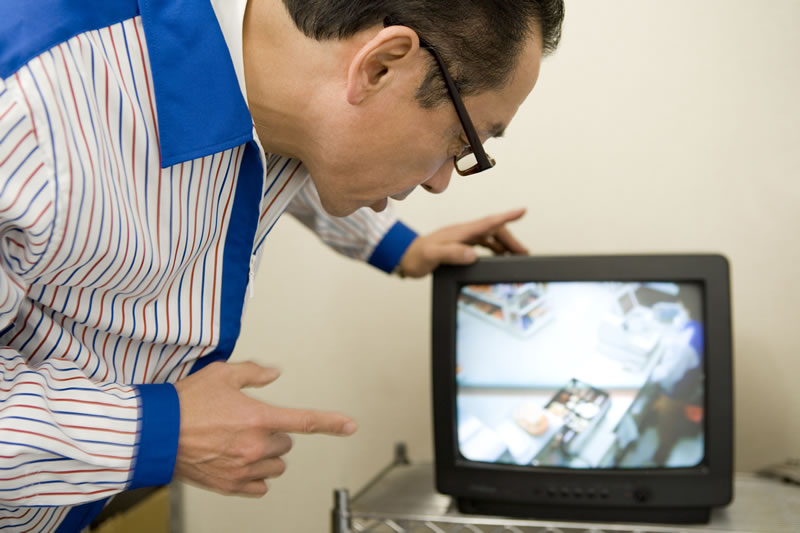Imagine it’s 5:30 on a Tuesday morning. You don’t know it, but your opening shift employee is running late.
Your convenience store opens at 6 a.m., and your first regulars will be shuffling in shortly.
The employee whips his car into a parking spot and fumbles with the keys as he unlocks the front door. He knows you wouldn’t be happy with him.
He flicks on the lights, turns on the cash register and gives the aisles a quick once-over. Some stock is out of place. A few shelves are empty. And there’s a couple soup cans on the floor.
It’s not great, but the employee knows he has several hours ahead to tidy up — if it’s not too busy.
“Good enough,” he thinks to himself as he flips the sign on the door to “Open.”
Hopefully, that scenario doesn’t describe the opening procedures at your store. Getting your store ready for the day — and closing it at night — are critical to your store’s success, not to mention the safety of your staff and customers.
The best way to ensure everything runs smoothly is by creating a daily operations checklist. By writing down and standardizing procedures, all the must-do daily activities — cleaning, restocking, safety checks — will actually get done. No more employees guessing or forgetting critical tasks. You’ll never wonder what condition your store is in. And your employees will know what’s expected of them, whether they open your store, close it, or work in the afternoon.
Not sure how to create a checklist or what activities to include? You’re in the right place. This article will cover:
- How many checklists your c-store may need
- Tasks to include in your opening checklist
- What you might include in a midday checklist
- Suggested procedures for a c-store closing checklist


How many checklists do you need?
You should at least create two: a procedures list for your store’s opening and one for closing. If your store has extra-busy mornings or you want to keep close tabs on your operations, adding a midday checklist will help you stay on top of everything.
Activities to include in your store opening checklist
While there are several model retail procedure checklists online, the best one is the one you customize for your store. No one knows how to run your store better than you. And while no two c-stores are the same, many tasks are common to stores of all sizes. Consider including these in your morning checklist.
Safety and security checks
Security starts before employees enter the store.
- As they pull into the parking lot, instruct workers to observe their surroundings with safety in mind. Robberies are most common when stores are nearly empty. Have your employees walk around the building, looking for broken locks, windows, or signs of trouble. Instruct them to call you or the police if anything is amiss.
- After they enter the store, remind employees to keep the doors locked until opening. And don’t let any customers in early.
- For safety reasons, not to mention efficiency, consider having at least two employees for every opening and closing shift.
Pre-opening store interior inspection
There’s more to opening a store than flicking the lights and turning on the heat or air conditioning. Safety, maintenance and merchandising are all essential tasks.
- Start by inspecting the aisles, ensuring they’re free of obstructions. Check the shelves. Are they stocked? Neat? Are price signs on the shelves or tags on the merchandise? If you’re running any sales, do you have signs promoting them? Did you remove the expired ones?
- Perform an inventory check if that’s part of your daily routine.
- Run a vacuum or duster to clean the floors.
- Ensure the HVAC system is working and set it for the daytime temperature. Check the floor and walls for moisture, which could mean a plumbing or HVAC problem.
- Check your restrooms to make sure they’re clean and sanitary. Restroom maintenance is one of the most important customer considerations when deciding where to shop.
- Turn on your cash register or point-of-sale system and ensure it’s working. Check the cash drawers.
- Turn on the “Open” sign or turn the “Closed” sign over so it says “Open.”
What you may want to include in your midday checklist
Although not every c-store needs a midday inspection, you might want to have a list that you refer to during the middle of the day or early afternoon. It could include:
- A restroom inspection. Clean restrooms always leave a good impression.
- Seeing if you need to rearrange or replenish anything in your high-traffic areas, such as your refrigerated section or hot food areas.
Procedures for a c-store closing checklist
While employees — not to mention you — are eager to get home after a long day, proper procedures will make opening easier tomorrow. While some activities overlap with store opening, it never hurts to do them twice.
Here are some of the tasks that you should complete before leaving.

Security inspection
- A few minutes before closing, walk around to see if anyone is still in the store. Ask remaining customers if they need help and remind them that the store will be closing shortly.
- Check the restroom for customers.
- After closing, check that no customers remain in the store.

Clean the store
- Grab a mop or vacuum and get rid of the day’s dirt and grime.
- Put away any products that are out of place.
- Straighten and restock the shelves.
- Wipe down and disinfect counters, doors and other frequently touched areas.
- Clean the restroom.
- If you sell gasoline, check the pumps for fuel spills and clean them up.

Power down your electronics and building systems
- Turn your HVAC system to the overnight/unoccupied setting.
- Turn off your cash register/POS system.
Final inspection and departure
- Before you or your employees leave and lock up, walk the aisles, look over the closing checklist and make sure nothing was missed.
- As you lock up your store and head to your car, check that nothing seems out of place. If you have concerns, call the police.
Last tips
When making employee schedules, ensure you allow enough time for workers to perform all the tasks on the opening or closing checklists. Don’t tell employees to arrive 10 minutes before your store opens if you expect them to make it ready for customers. And don’t tell closing shift workers they should be punching out 15 minutes after locking up if you want them to tidy the store.
Using checklists means better organization, better communication, and a better shopping experience for your customers. And that could mean more sales and profits for you.











